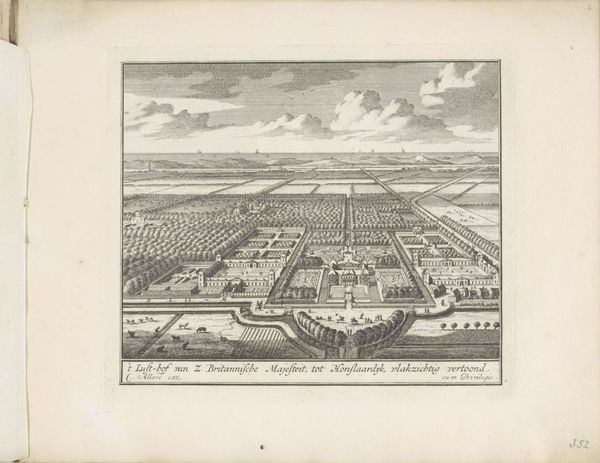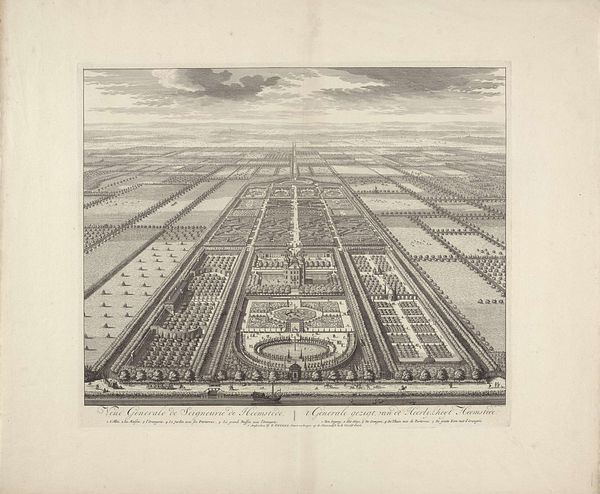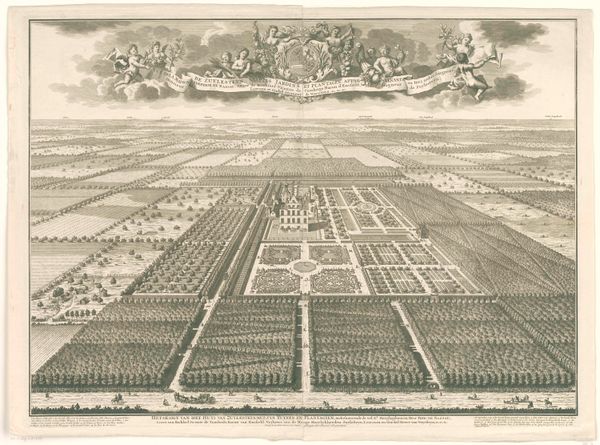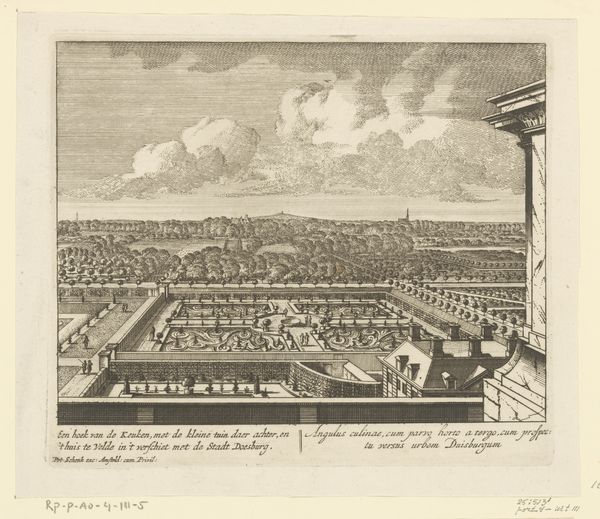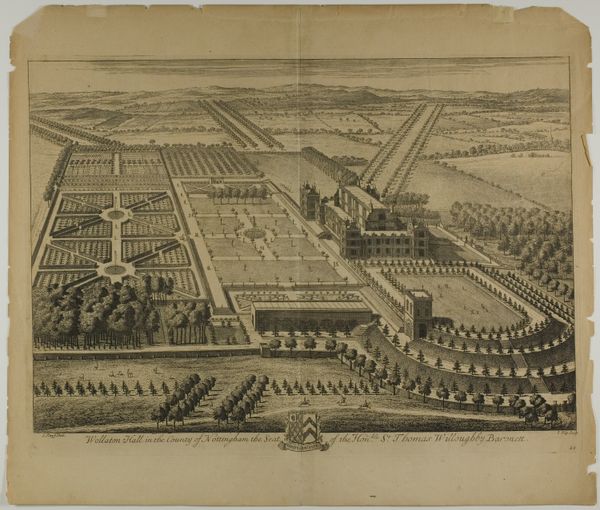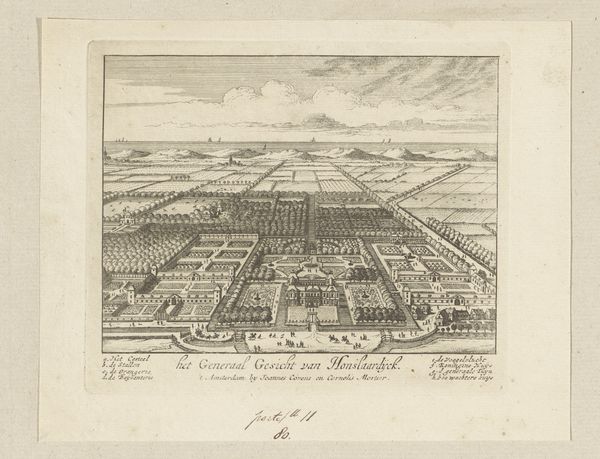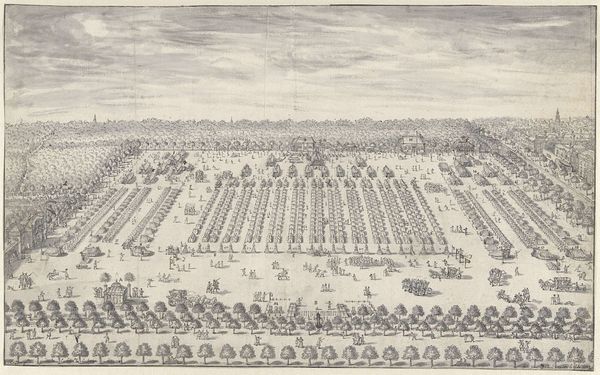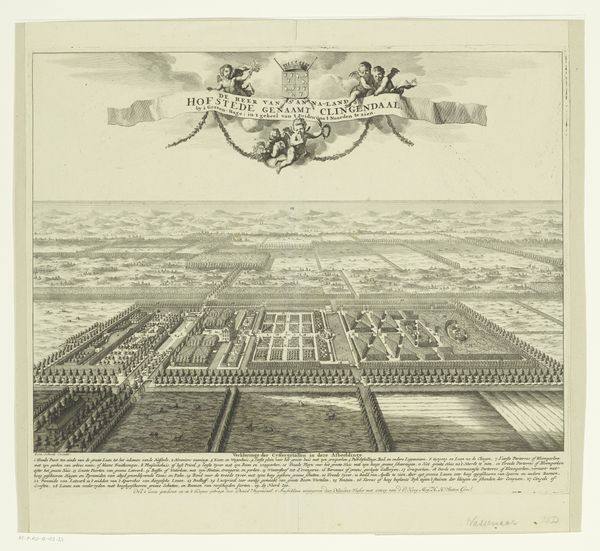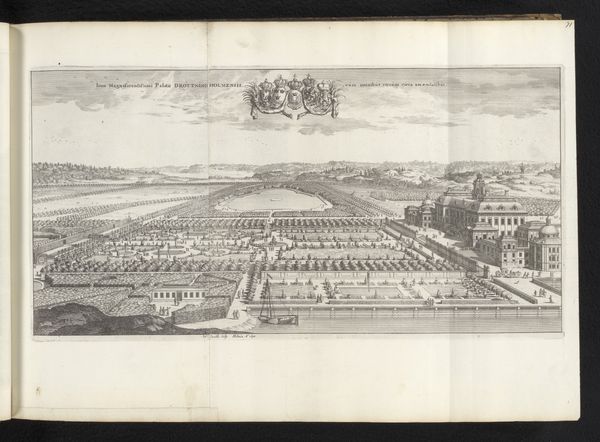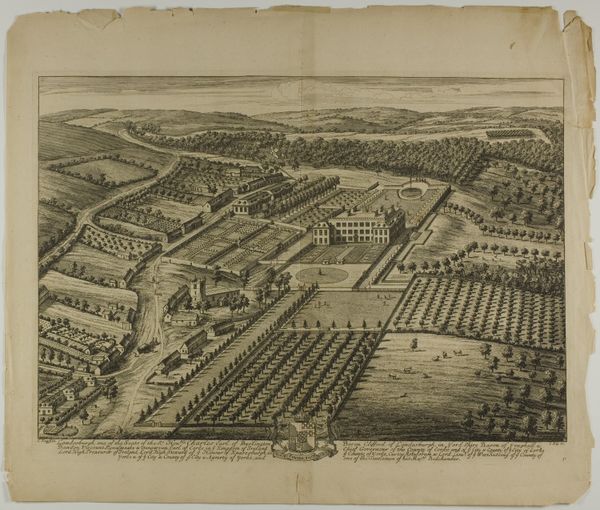
print, engraving
#
baroque
#
dutch-golden-age
# print
#
landscape
#
perspective
#
cityscape
#
engraving
Dimensions: height 378 mm, width 482 mm
Copyright: Rijks Museum: Open Domain
Curator: Bastiaen Stopendael created this piece, titled "View of Soestdijk Palace in Bird's-Eye Perspective," sometime between 1647 and 1693. It's an engraving, currently held in the Rijksmuseum. Editor: My initial reaction? Impeccable order! This engraving is almost obsessively symmetrical. Every tree, every bush, seems placed with geometric precision. It's impressive, sure, but also slightly... sterile, no? Curator: Well, let’s consider the period. This was the Dutch Golden Age, and Soestdijk Palace held political significance. Prints like this weren't just art; they served to broadcast power, wealth, and control. The aerial perspective emphasizes dominion over the landscape. It says, "We survey, we own." Editor: Ah, so it's less about art and more about...real estate bragging rights? Though, I admit, that bird's eye view is remarkable. It transforms the palace into this almost abstract composition of shapes. All those tiny figures walking around! Do you think they ever felt like ants under a magnifying glass? Curator: In a sense, perhaps. The Baroque style, which influences the piece, aimed to impress and inspire awe. The gardens meticulously laid out—those are intended to reflect human mastery over nature, a key philosophical theme of the era, and royal status. Editor: You know, knowing the political undertones, I see it differently. The engraving’s very tightness, the rigidity, feels almost oppressive. It's control exemplified in landscape design, almost literally mapped onto the world. The engraver gives it to us with precision, and that can feel rather potent when we consider just how ordered, how carefully staged, such views were for elites at the time. Curator: Absolutely. The very act of creating such a detailed print and disseminating it reflects the expanding print culture and its role in shaping public perception of power and space. It also contributed to ideas about the "correctness" of geometric planning in architectural theory and the importance of the aristocracy in bringing 'order' to nature. Editor: It's like looking at a carefully constructed facade, not just of a building but of an entire society. It invites you to gaze with wonder, yet simultaneously whispers about the forces holding everything so meticulously, artificially in place. What at first seems appealing for being neatly patterned comes across as tightly controlled when considering those power dynamics. Curator: It's certainly a fascinating testament to the socio-political currents of the Dutch Golden Age, revealing as much about the exercise of authority as it does about aesthetic preferences. Editor: Yes, seeing that rigid control translated through a landscape brings a whole other dimension to its apparent simplicity. Makes you consider whose perspectives are actually highlighted in such landscapes, huh?
Comments
No comments
Be the first to comment and join the conversation on the ultimate creative platform.
